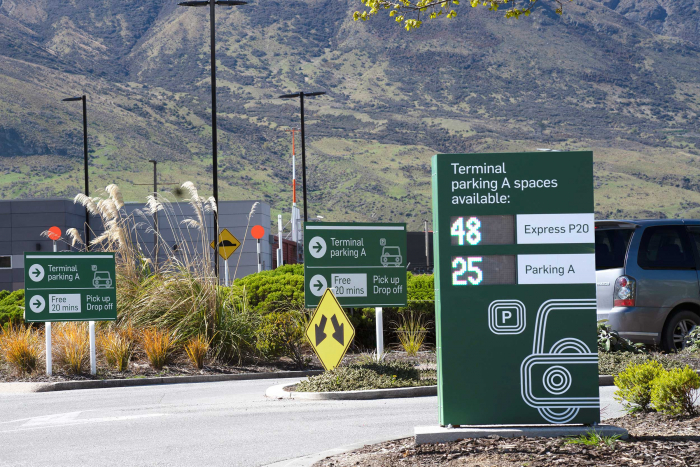Queenstown Airport in New Zealand has upgraded the wayfinding offering across its site, from arrival point to departure point and everything in-between.
Designed to enhance the visitor experience, the aim was to provide clear, internationally recognized signage and wayfinding for customers to navigate their way from park to plane and in reverse.
The program of works started over a year ago, with the terminal parking lots, P2 drop-off zone and transportation area, the rental parking lots and the arrivals and departure doors being the first to get a refresh.
The installation and transformation of the interior wayfinding has now been completed, including the overhead signage, airside and landside doors, bathroom facilities, Flight Information Display Screens (FIDS), information desk, baggage trolleys and the agency areas for departures and arrivals. Queenstown creative design studio Makebardo created the redesign.
Olivia Pierre, general manager for commercial and customer experience at Queenstown Airport, said, “Starting with a blank canvas, we worked to better understand and respond to the needs of our visitors. We wanted something that was unique, yet functional and I think we’ve achieved this balance.
“Throughout the creative process we’ve put our visitors at the heart of every concept and decision, to ensure a customer-centred approach and always referred to our core principles of affordable, adaptable, sustainable and memorable. As a result, we’ve achieved a highly distinctive and consistent wayfinding system with a unique personality which reflects our sense of place.”
Bren Imboden, one half of the creative duo behind Makebardo, said, “The end concept needed to communicate with various audiences at different times, so we decided to move away from the classic signage system, instead super-sizing the icons creating a highly-graphic and functional experience, resulting in an innovative and strong impact on the eye.
“The main idea was to visualize the physical lines that are created when people are traveling from one place to another. It is a concept based around a flexible, modular and scalable identity of three intuitive and friendly lines, which have multiple uses and forms depending on the action required.”

